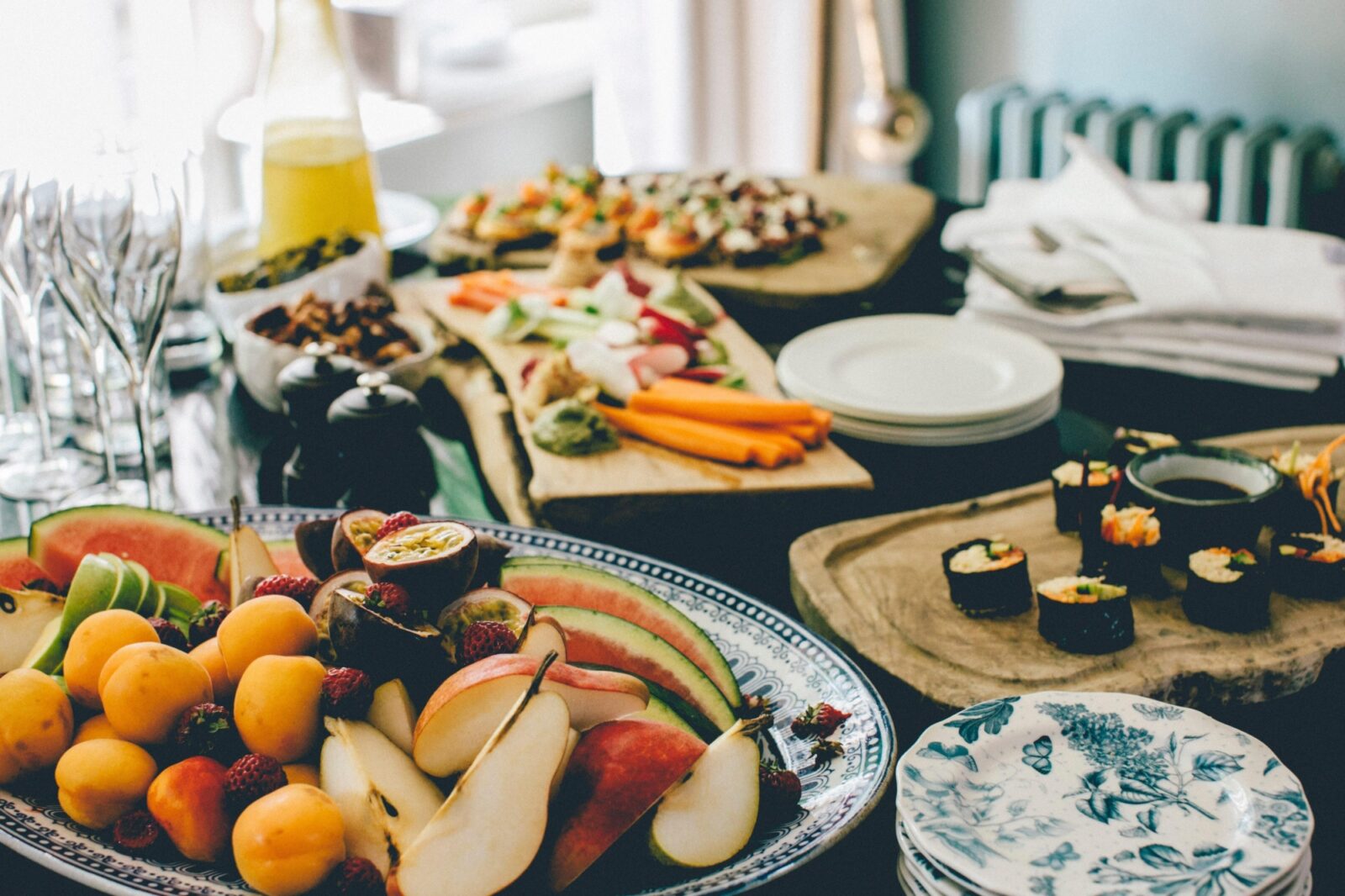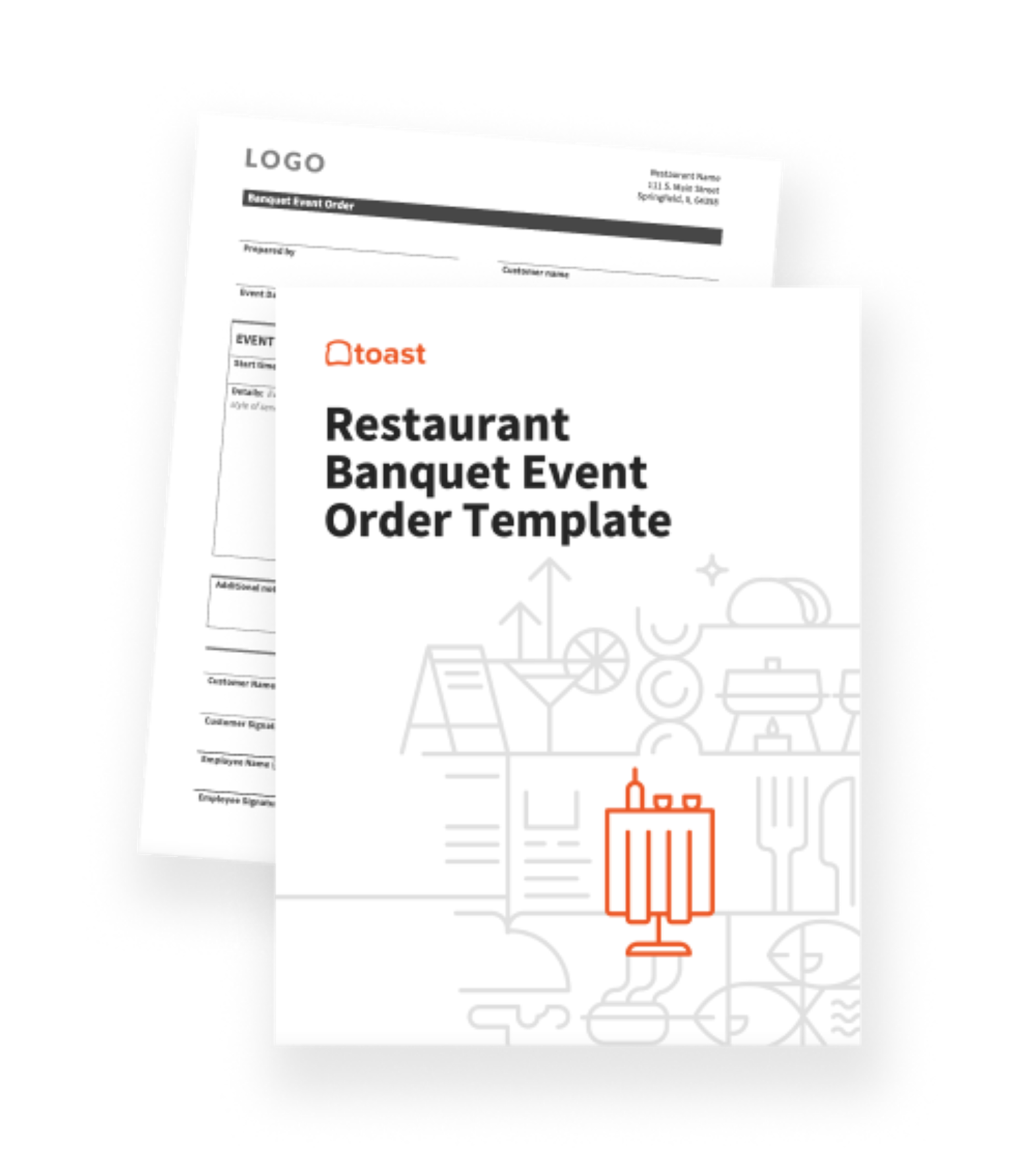
Catering Menu Ideas: How to Build a Restaurant Catering Menu
Looking to build a catering menu for your restaurant? Check out how below, as well as some great examples of catering menu ideas.

Molly MendolaAuthor


Restaurant Banquet Event Order (BEO) Template
This free BEO template can help your restaurant optimize incoming catering requests and streamline documentation.
Get free downloadSuccessful restaurant owners and operators can be incredibly creative in expanding their businesses (and menus!) into catering and events.
Catering options can help restaurant operators generate extra revenue — and the ability to review all job requests and set prices can help enable catering and events to hit certain profitability levels that typical restaurant service can't always achieve.
Key Takeaways
- Catering Menu Benefits: The market size of the catering industry in the US is $12.2 billion dollars per year, and the average profit margins are between 10-12 percent.
- How to Make a Catering Menu: First, match your catering menu with your restaurant. Then, determine the profitability of your catering venture by adding your cost of food, labor, and materials, and subtract that from your gross revenue. Finally, set up a catering schedule around your ideal/busiest season.
- Catering Menu Food Ideas: Opt for entrees, appetizers, and side dishes that are crowd-pleasers. Such as buffet bars, finger foods, charcuterie boards, and etc. All the while, encouraging guest feedback and setting a reasonable price for catering services.
- Conclusion: Catering can help bring in a new revenue stream and grow your restaurant business, without drastically adding to expenses.
Menu Engineering Course
Take this course to make the most of your menu. Learn about menu psychology and design, managing your menu online, and adapting your menu to increase sales.

The Benefits of a Catering Menu
Your goal as a restaurant owner is to attract and retain guests, creating dining experiences that keep them coming back for more. One way to entice both new and existing customers is with a catering menu.
Even though the market size of the catering industry has declined 4.3% per year on average from 2018 to 2023, catering is still a massive $12.2 billion dollar industry.
A typical full-service catering company will see a profit margin of 10-12 percent, while a normal full-service restaurant will see a 4-7 perfect profit margin. If your restaurants’ profit margin went from 7% to 10% with a boost from catering events, wouldn’t that justify introducing a catering menu to your full-service operations?
In this article, we'll talk about:
- How to create a catering menu
- How to come up with catering menu ideas
- How to price a catering menu
Restaurant Banquet Event Order (BEO) Template
This free BEO template can help your restaurant optimize incoming catering requests and streamline documentation.

How to Make a Catering Menu
Step 1: Match the Catering Menu With Your Restaurant
It’s important for the catering side of your restaurant to mirror similar quality and pricing of your original full service menu.
Chef Avery French of Black Tie Catering Company offers a set menu based off of the Maine harvesting seasons. Her philosophy is as follows:
Each chef, when catering, is striving for a creative and memorable dish so that the guest will remember, enjoy, and come back for their next event or meal.
Chef Avery French
Black Tie Catering Company
Make sure that your catering menu fits with your restaurant’s overall brand and concept, and stays true to what you do best. Your catering menu likely won’t include your full (regular) menu offerings – so focus on the items that are popular, profitable, and easily scalable for large groups in a family-style, sit-down setting.
Step 2: Know Your Numbers
Below are some metrics to take into account when building a catering menu. These are crucial for this new revenue stream to be successful.
- Cost per Plate (Total Food Cost ÷ Total Guests Served)
- Cost per Person
- Number of Guest
- Labor Hours
- Profitability
You can determine profitability of your catering venture by adding the cost of food, labor, and materials (heaters, food trays, tables, etc.), and subtract that from your gross revenue. Keep in mind that time spent preparing for and working the event should factor into labor cost.
Gross Revenue - Food Cost - Labor Cost - Materials Cost = Profit
These metrics and equations are crucial for the restaurateur to be aware of, in order to make profit from the catering sector.
Step 3: Set Up Your Schedule
Offering catering year-round will ensure the best catering revenue.
Wedding season is the busiest time for catering, but there are other events that happen outside of May through September! If offering catering services stands to help your servers, disseminate your brand, and add another revenue source for your restaurant, why limit that to just one season?
That said, catering takes time and resources that your restaurant may not be able to afford. If you only end up doing one or two events in the fall and winter, it’s possible those numbers don't justify offering catering throughout the year. Test it out, and determine which type of event is best for your restaurant.
Catering Menu Food Ideas
When it comes to menu structure, the most popular options are:
- Buffet style
- Plated and served
There’s also a wide range of themes to consider when creating a catering menu. Here are a few ideas and examples to get you started.
Popular Catering Menu Items
Having regular, gluten-free, and vegetarian options for the catering menu items below ensures that all your guests can enjoy delicious and inclusive meals, making your catering menu a memorable experience for everyone.
Popular Entree Items
- Taco Bars: Mexican food is a crowd-pleaser, and build-your-own taco stations are popular for their customization and interactive appeal. They can include a variety of fillings, salsas, and toppings.
- Charcuterie Boards: Charcuterie boards have become a staple at events of all kinds due to their versatility, aesthetic appeal, and the variety of flavors they offer. Popular kinds of Charcuterie boards include Italian, Mediterranean, Korean BBQ themed flavors.
- Food Trucks: Food truck catering offers a variety of specialized cuisines and is particularly popular for event catering ideas that require casual and outdoor space.
Popular Appetizers and Side Dishes
- Fruit Cups and Veggie Skewers: Healthy and refreshing options that are also budget-friendly and can easily be served on platters.
- Mini Foods: Finger foods such as sliders, petite desserts like mini donuts, and fresh fruit like sliced apples with caramel are crowd-pleasers and easy to eat while mingling.
- Late-Night Snacks: Offering items French fries and gourmet popcorn as late-night snacks keeps guests energized and happy during evening events.
- Breakfast/Brunch Items: Depending on what time of day events are being held, offering waffles, pancakes, and other popular breakfast/brunch items on your catering menu will properly set the mood for the time setting.
For more insights into catering menu items that generate the highest profits, check out our 10 BEST and Most Profitable Catering Foods and Menu Items article to help grow your restaurant catering’s bottom line.
An Offshoot of Your Current Menu
Nothing’s wrong with sticking with what works. If your customers regularly return for certain dishes, they’ll likely be pleased to see them included on your catering menu.
Cassie's Pizzeria in New Jersey offers a catering menu that largely mirrors their main menu, except the dishes are sized to feed crowds.
View this post on InstagramA post shared by Cassies Pizzeria (@cassies_pizzeria)
Seasonal, Farm-to-Table, or Rotational Menu
If your restaurant sources farm-fresh ingredients or closely adheres to the seasons, this should be reflected in your catering menu. Just remember that this requires you to frequently rewrite your catering menu, so if you’re looking for a lower maintenance option, this might not be for you.
Guest Feedback
Guest feedback is crucial to any new venture. It helps you prepare for dietary restrictions and keeps your customer-service levels at the highest level.
If they want to see your restaurant's take on a specific dish or cuisine, and you feel you can meet their needs, take a shot at it!
How to Price a Catering Menu
Since catering volume is so large, menu pricing is a little different to your normal day-to-day restaurant menu cost calculations.
By gauging costs from the regular restaurant menu, you should be able to price catering menu items profitably, but not too aggressively.
A markup of three times the cost of food is typically appropriate. Anything higher can send your customers running because it won’t be budget-friendly.
Keep in mind – event planners are usually prepared to spend hundreds, thousands, or even tens of thousands of dollars on catering, especially if they’re planning for a corporate event. Make sure that you’re pricing fairly but also comparably to what the market will bear. If you’re not making a profit, it’s likely not worth the time and effort.
Menu Engineering Course
Take this course to make the most of your menu. Learn about menu psychology and design, managing your menu online, and adapting your menu to increase sales.

Let's Get To It!
Catering can help bring in a new revenue stream and grow your business, without drastically adding to expenses.
Create a mouth-watering catering menu according to menu engineering best practices. For catering menu templates and more information on how to design a catering menu, check out our Catering Menu Templates.
Related Catering Business Resources
- How to Open a Catering Business
- How to Write a Catering Business Plan
- Catering Business Name Ideas
- Catering Licenses and Permits
- Catering Ideas and Concepts
Catering Menu Templates
Use these catering menu templates as a starting point for your menu design or to give your menu a refresh.

Is this article helpful?
DISCLAIMER: This information is provided for general informational purposes only, and publication does not constitute an endorsement. Toast does not warrant the accuracy or completeness of any information, text, graphics, links, or other items contained within this content. Toast does not guarantee you will achieve any specific results if you follow any advice herein. It may be advisable for you to consult with a professional such as a lawyer, accountant, or business advisor for advice specific to your situation.
Subscribe to On the Line
Sign up to get industry intel, advice, tools, and honest takes from real people tackling their restaurants’ greatest challenges.
